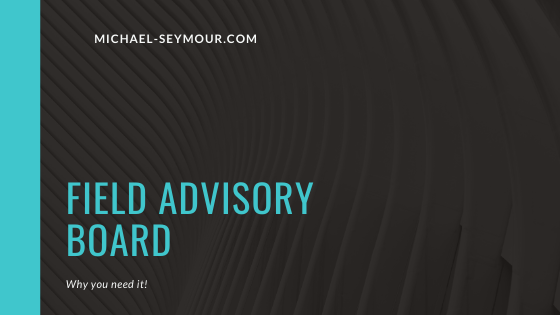Marketing-sales alignment is one of the biggest trends in tech marketing and sales enablement. Trying to get the field and marketing on the same page to drive leads and ultimately revenue.
If you don’t have a field advisory board (FAB), then you need to get one ASAP. It’s probably the easiest thing to do which will yield tangible results for marketing-sales alignment. I learned about the concept from a work colleague at Oracle. After being invited to join the advisory board, I was delighted with the type of engagement I saw from it. I refined the concept while at Oracle, then at my last job (Intapp), I deployed a field advisory board. The reaction from the product, marketing, and field teams was fantastic, and I do believe it helped our GTM strategy. I do believe this fits in the concept of market research, and I have discussed this quite a bit on this blog.
What is a field advisory board?
A field advisory board offers a mechanism for you to collect feedback from the “feet on the street.” As a structured mechanism to provide feedback to the marketing, enablement, and product teams (or others!), it offers you the ability to act to increase sales or improve service.
Product marketing, marketing, enablement, or product teams often want to gather feedback about interactions with customers. The normal mechanism for them to do this is to call up their favorite rep, or sales manager (more on that later), and ask them questions. While this is certainly better than no feedback, what tends to happen is you fail to get cross-team feedback. Individuals that possess good relationships or speak up frequently provide an outweighed influence. They also might get annoyed at the frequency and haphazard reach out.

What topics should we cover?
This is completely up to you, but generally, I like to collect feedback on things that can drive action and are open to influence. First off, you don’t want to ask for feedback if you are unwilling to act on it. The field’s time is valuable, as is yours, they won’t want to invest it in something that is just a paper exercise. Make sure that the topics you cover can be influenced.
Second, items usually need to be action-oriented. While you can have a few open-ended discussion topics, try to keep topics to things that you can act upon. I personally like to review things planned but not yet executed. This enables the field to influence them, and also aren’t set in stone.
Examples of Topics:
- Pricing and packaging – Have a change to how you sell your products? Take it to the FAB to get feedback.
- Campaigns – New campaign going into the water? Why not ask the field what they think?
- Sales Issues – Issues in closing business or moving things along in the funnel? This is a perfect discussion topic that can drive action.
- MarTech Stack – Reps and CSMs often have a very strong point of view on what the tech stack should look like.
I talk to sales management, I don’t need this
Sales management is a solid proxy for the viewpoint of customers. You should never stop talking to sales management. However, limiting your feedback to sales (or CSM, or Services) management causes a few pitfalls.
First, customers behave differently when the meeting involves management. Most interactions with customers do not involve management. Executives frequently appoint more status to management and thus incentivized to engage differently. Not to mention, topics covered by management differ from those just involving reps, and those meetings often occur later in the sales cycle.
Second, management often focuses on the trap of representing the last conversation, or the most critical deal of the quarter. While this feedback provides value, it fails to offer a true representation of what is going on with customers and prospects.
Who is on the Field Advisory Board?
Again, you determine the topic. My general guideline is that representations of the board should interact with customers or prospects as a core aspect of their job. Limit interactions to closing or renewing related business. I typically exclude actual consultants and support from these calls. Otherwise, these calls just turn into a product feature/function/support call. I would include those who sell consulting or support. You should represent all geographies, industries, and key functions. I try to limit it to about 10-15 people per FAB, but there is no reason why you can’t have more.
Field Advisory Board
Now that I have explained the field advisory board, I would encourage you to establish one at your firm. Don’t feel limited to what I describe here, play around with the topic, and hit me up with feedback on what works for you.

